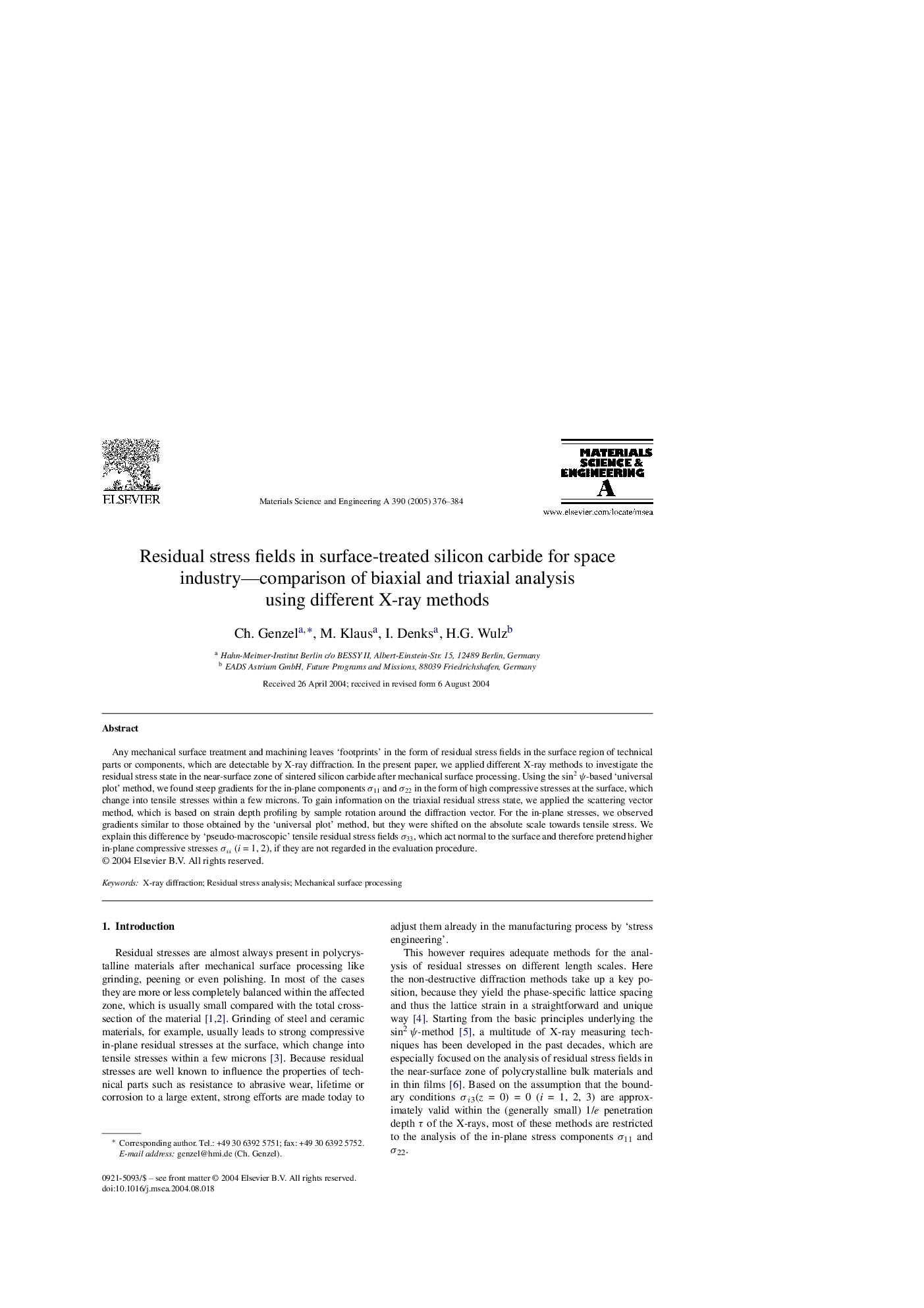| Article ID | Journal | Published Year | Pages | File Type |
|---|---|---|---|---|
| 9796694 | Materials Science and Engineering: A | 2005 | 9 Pages |
Abstract
Any mechanical surface treatment and machining leaves 'footprints' in the form of residual stress fields in the surface region of technical parts or components, which are detectable by X-ray diffraction. In the present paper, we applied different X-ray methods to investigate the residual stress state in the near-surface zone of sintered silicon carbide after mechanical surface processing. Using the sin2Â Ï-based 'universal plot' method, we found steep gradients for the in-plane components Ï11 and Ï22 in the form of high compressive stresses at the surface, which change into tensile stresses within a few microns. To gain information on the triaxial residual stress state, we applied the scattering vector method, which is based on strain depth profiling by sample rotation around the diffraction vector. For the in-plane stresses, we observed gradients similar to those obtained by the 'universal plot' method, but they were shifted on the absolute scale towards tensile stress. We explain this difference by 'pseudo-macroscopic' tensile residual stress fields Ï33, which act normal to the surface and therefore pretend higher in-plane compressive stresses Ïii (i = 1, 2), if they are not regarded in the evaluation procedure.
Related Topics
Physical Sciences and Engineering
Materials Science
Materials Science (General)
Authors
Ch. Genzel, M. Klaus, I. Denks, H.G. Wulz,
